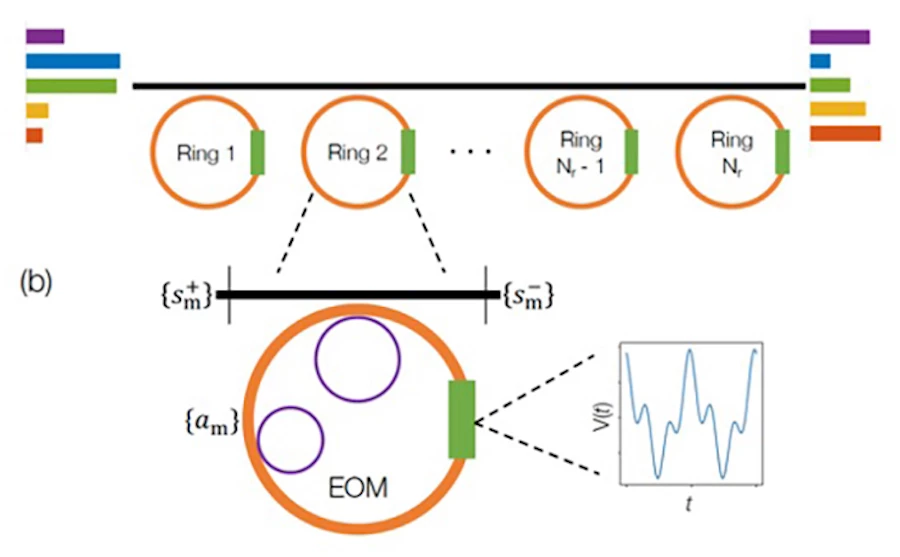Engineers at Stanford have created a new optical device that can easily manipulate light into basically any color desired. The system uses a series of modulators to fine-tune the frequencies of individual photons to change their color.
Our eyes perceive the color of light based on the frequency at which its photons resonate. Lower frequencies correlate with longer wavelengths, which is a measure from one peak to the next if you map out those frequencies. In the visible light spectrum, we can see from the longer wavelengths of red light to the shorter wavelengths of blue light.
The Stanford team has now created an optical device that can tweak the frequencies of individual photons. That not only changes their color, but by mixing these photons of different colors to different degrees, a beam of light can be fine tuned into basically any color that’s needed.
The new device consists of a low-loss wire, with a series of rings dotted along it. As photons travel through this wire, they move into the rings where modulators transform their frequency. There can be as many rings as necessary to change the light into the desired color.

The team says the device is extremely precise, allowing for very fine control of the ratio of different photons. So, for example, a beam could start with 80 percent of its photons at a frequency of 510 nanometers and 20 percent at 500 nm, which would make it mostly green. Using this device the beam could be shifted to 73 percent at 500 nm and 27 percent at 510 nm, which would make the light overall more cyan.
The team says that this powerful new tool could have a range of applications in the field of photonics, including communications, quantum computing and AI, and its design should allow for more compact devices.
“It’s very versatile,” says Shanhui Fan, senior author of the study. “The engineer can control the frequencies and proportions very accurately and a wide variety of transformations are possible. It puts new power in the engineer’s hands. How they will use it is up to them.”
The research was published in the journal Nature Communications.
Source: Stanford University




